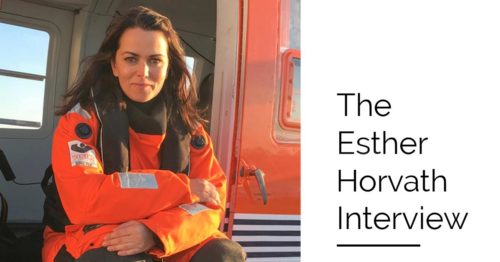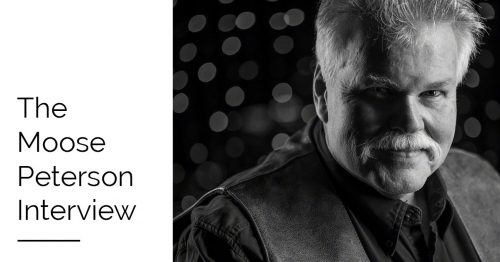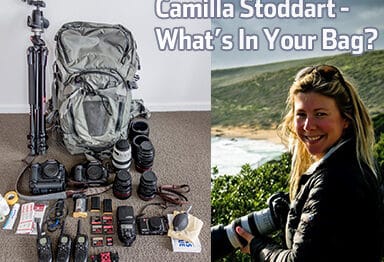My next guest for this growing interview series is internationally-renowned storm chaser, time-lapse photographer and film-maker Mike Olbinski. I was first exposed to Mike’s work nearly a decade ago – when his time-lapse of a massive haboob (dust storm) hitting downtown Phoenix Arizona in 2011 went viral.
Since then, he’s gone on to produce some of the most eye-popping still images and breath-taking films documenting the power and beauty of active weather. His work has appeared in a Marvel feature film, and he’s even won an Emmy award for his work during the 2015 monsoon season.
Read on to learn what motivates Mike, how he’s built his career pursuing his passion, and more than a few lessons he’s learned along the way.
—
MJ: Hi Mike, thanks so much for being up for this.
MO: Absolutely, glad to do this.
MJ: For folks who haven’t met you before, how would you describe what you do with photography, and perhaps a little bit about the journey you’ve had so far?
MO: I’ve been married 21 years to my beautiful wife and we have three kids. I was born and raised here in Phoenix, Arizona, and I grew up loving storms, I think at least partly because my dad did.
We’re in the desert, and we don’t get a lot of rain, but when we do get these big storms, the lighting out here is some of the best in the world. With desert foreground and mountains, it can be really photogenic.
I remember watching lighting with my dad, and that stuck with me. Then when I grew up I really got into weather and radar. I always wanted storms to come to my house, so I kept an eye on the radar and would let friends know when storms were on their way. People always wondered why I wasn’t a meteorologist, but I never wanted to do the math. I just liked to share weather with people.
MJ: So was photography always a part of that sharing weather for you?
MO: I recently found pictures I’d taken in high school of this big storm outside our house. I couldn’t help but run outside and take pictures of storms, even then – but it wasn’t until about ten years ago that I first tried to do anything serious with it like photographing lightning, and I said to myself “okay, I really gotta figure out how to do this”.
In fact, I just had a Facebook memory pop up last week about my Canon Rebel XSi arriving, which was my first DSLR, almost exactly ten years ago. So yeah I picked up that camera and got into storm photography, time-lapsing couple years later, and then that big dust storm in 2011 that went viral.
MJ: Tell me about what that viral moment meant for you.
MO: It was a huge moment. It was a big deal because people started licensing it. So it woke me up to “Holy crap, people pay money for this stuff!”. I didn’t know that before, I and this is stuff that I would do for free. So I just started chasing more, and time-lapsing more. And that lead to more and more things happening. So here we are ten years later, and I’m actually just about to come up on my five-year anniversary of being a full-time photographer.
MJ: Congrats! That’s pretty awesome to be able to build a career out of your passion for storm chasing. Can you break down a bit about what’s gone into that for you?
MO: Yeah, I do storm chasing a lot, photo tours, a lot of image licensing, and I also shoot weddings and family photography on the side. That’s actually how I got started on my path to full time, initially with weddings as the main income source and then the storm chasing slowly caught up.
It’s like anything that you love so much, and when you end up doing it for a living it can be draining and exhausting. I have those highs and lows where some times I’m exhausted and say to myself “Man, I don’t know if I want to go chase right now”. Yet once I’m out there and doing it, I obviously still love it and would drive to the ends of the earth for a storm.
In 2013, I got my first supercell on time-lapse, and it brought tears to my eyes – it was the most incredible thing I’d ever seen. That went viral too, and ended up being the number one video on Vimeo in 2013. It was my first Vimeo Staff Pick, and it ended up getting licensed all over. It even ended up in the second Thor movie.
All that stuff is cool, but I never got into this to make money. It was just “I want to do this. I want to shoot pictures and I want to share them.” So that success really just validated me telling my wife “I’m going to go out for 3-5 days and chase storms, and take time off work to do it.”
MJ: Wow I’d say having Marvel knock on your door is a pretty good validation of your passion. How did that happen?
MO: When Marvel came to me, my first reaction was “wait a minute, don’t you guys just make this stuff up, and use CGI?” But there’s a lot of things about storms and clouds that computers just can’t model and produce well. It’s also cheaper to spend a few grand on a clip rather than having artists spend weeks and weeks of time.
I’m also doing this work at a fairly high level. My footage is all over 8K resolution, it’s usually very sharp. It takes a lot of work, patience and frustration to get this footage. It’s exhausting, but it’s fun!
MJ: How daunting is it to make that leap from still images to that calibre of footage or film-making?
MO: That dust storm time-lapse was my third ever time-lapse. I started my first one the day before. I didn’t know what I was doing. I was shooting 5-second intervals in AV mode on my camera, and the shots were all in jpg. It was shaky because it was getting windy, and the quality was just wasn’t anywhere near what I can do today. Luckily, it didn’t matter because the moment was so cool.
So there was a process of learning to shoot in full RAW, with higher resolution. My 2013 viral clip was better than my 2011 one, but IMAX reached out and it was just a little too low res for them. So I said, “Okay, I can’t do that again.” So I eventually went to the Canon 5DsR that shoots 50MP.
MJ: I know there are lots of newer cameras that feature either an intervalometer or complete time-lapse mode of some sort built in. Personally, I’ve had a ton of fun playing around with the time-lapse mode on my Nikon Z6, which not only captures the images at given interval, but also renders a final video. But it sounds like you’ve been taking a full manual approach all along – can you maybe explain a bit about your approach and the benefits?
MO: Yeah, I shoot everything in manual and then take all the frames and put them together in post later.
I don’t like internal intervalometers, mostly because storm chasing is a run and gun kind of situation. Setting up my camera and then going into the menu to set up the time-lapse and then click start… I’d much rather use my external intervalometer which is always attached to my camera, and just click it and go. I’m almost always shooting 1 or 2 second intervals because I’m shooting fast to capture the crazy fast-moving storms.
Or if I’m shooting lighting, I can stop the intervalometer briefly, make adjustments to my shutter speed if needed and then resume the time-lapse right away. With the internal intervalometers, I know you can’t stop them and start up again that quickly.
The cool thing about that is I can create these videos that are 8K resolution – so much more than any built-in video mode – and I don’t need to spend $65k on a RED Epic camera.
MJ: Great point. The films you’re creating have such an incredible impact. With still photography, I think many of us are used to that notion of ‘freezing time’, but there’s something else going on with time-lapse… it’s revealing something that’s right in front of us, but we can’t quite see or process with our own eyes.
MO: Yeah, you’re accelerating time. That’s why I got into time-lapse to begin with. To watch a cloud erupt vertically is just fascinating. When you’re looking at it in person, you’re like “oh my gosh, I can’t see that”. Dust storms are these massive walls of dust that you can *kinda* see moving with your own eyes, but when I was able to put together a time-lapse, you can see how they are really just air getting pushed along. It’s an outflow boundary of air pushing across the ground, and if it’s a big enough storm, that pushes the air up above it and you’ll see these clouds building on top. It’s absolutely incredible to see this evolution of a cloud sped up.
Even with a tornado, which is easy to see moving with your own eyes… if it’s sped up as a time-lapse you can see even more life in it.
MJ: You’ve captured so many storms and unique atmospheric phenomena… is there anything that’s on your meteorological ‘bucket list’?
MO: Hmm – well in Venezuela there is this ‘Catatumbo’ lightning that’s over this lake. I’d love to go there for like 5 days and see what I can get, but relations with the US aren’t great right now.
My standards go up every year, which presents a bit of a problem. I put out this film called Vorticity II this summer, and it took me two years to get footage for it because everything that I thought was great that I used to shoot is now boring to me. I just want everything to be more incredible – in terms of colours, structure, all this stuff. So it’s not necessarily about wanting to capture a particular phenomenon, but it’s about capturing everything *better*.
MJ: How does the science fit into getting a great image – do you need to be a student of meteorology to do this?
MO: I think you should know at least a little bit. If you go out and don’t know what you’re looking at, you won’t get a good shot. I was out with a documentary crew a while ago, and we were on the south side of this incredible storm. They were blown away, but I was telling them we’ve gotta get on the east side, and a little bit north, and we’ll look right into the barrel updraft. If I hadn’t known what to do, or insisted that we keep moving, I wouldn’t have got that shot.
Supercells usually have ‘inflow’, which means that even if it starts raining or hailing, the wind will be at my back if I’m in front of the storm. So I can keep rolling since the rain will be hitting the back of my camera and not get on the lens. However, in Arizona these storms actually tend to be outflow-dominant. If you’re near a downdraft or outflow boundary, then you can get soaked and your lens will get rain on it. So there’s a bit of science behind knowing where to be.
It’s easy to ‘learn’ this stuff by reading or watching videos about weather, but until you’re out there and putting in time in the field, you’ll never understand fully.
MJ: You’re obviously self-taught and have done your homework. Is there anyone who’s work you’ve looked up to or who has acted as a mentor along the way?
MO: There’s actually not that many people who do this sort of thing. I can count perhaps 4 or 5 folks that chase these storms and put out time-lapses. But one of my inspirations purely as a photographer is Mitch Dobrowner. He would chase with Roger Hill, the storm-chaser legend, and he would do these almost infrared-looking black and white storm images. He kinda got me thinking more artistically about my photography.
There’s also guys like Zack Schnepf and Ryan Dyar who are landscape photographers, and their editing styles have been very inspirational to be on the stills side. On the storm-chasing side there’s also Reed Timmer. I saw him on the Discovery Channel show Storm Chasers back in the day, and that’s what made me realize storm chasing was a thing to begin with. So there may not be a lot of people who do exactly what I do, but there’s lots of folks that I look up to and get inspiration from.
MJ: What’s it like when you’re working in this niche where you’re your own toughest competition?
MO: Oh man. The highs and lows that go with it are real. Some times I just do not want to chase and think to myself “Should I just get a day job?” Or if I miss a day and someone else has been out there time-lapsing a big storm and I didn’t get it… it’s depressing. So I’m always up and down. I wish I could just brush things off when I miss something, but I work so hard that it’s tough. If I’m out shooting 38 days in a season, but happen to take the one day off that turns out to be the best day of the monsoon season? I would have traded maybe 28 of those other days for that one day. It’s tough.
MJ: When you work so hard to create your images and films, what is it that you hope viewers get out of the art you’ve created?
MO: I hope that people love seeing weather in a new way they haven’t seen before. It opens people’s eyes up. One of the comments I get the most on YouTube is “Watching your films made me feel like I’m underneath an ocean”. For people to see the dynamics and fluidity of the atmosphere… we literally have an ocean of water above us, it’s just particles that aren’t condensed into an ocean. People will comment that they have tears in their eyes watching one of my films, and it really hits home for me. It’s very humbling because I don’t always appreciate it when I’ve seen my clips hundreds of times before releasing a film.

MJ: If you could go back in time, is there anything you’d do differently on your journey or a piece of advice you’d pass along to others starting out?
MO: I’d go back and shoot that 2011 dust storm over again, not in .jpg and with faster intervals. I’d love to do that one again. But overall there’s nothing I’ve regretted about my journey.
For people starting out, I really attribute my success to not just crazy passion but borderline addiction. It’s not something you can get really good at by just going out on the weekend and seeing what happens. It’s my whole life. That’s just how much I love it. I would advise people to ask themselves if they really, *really* like what they’re doing. Of course, it’s awesome to just go out and see what you get, but if you want to make a career out of it, it’s going to take a lot of work to get really good.
Just be prepared to fail miserably and embrace it. Even with all the work and time I put into this, I still regularly get shots that are out of focus. Nature does what it wants. It can be super exhilarating and super frustrating!
MJ: Thanks so much, Mike!













